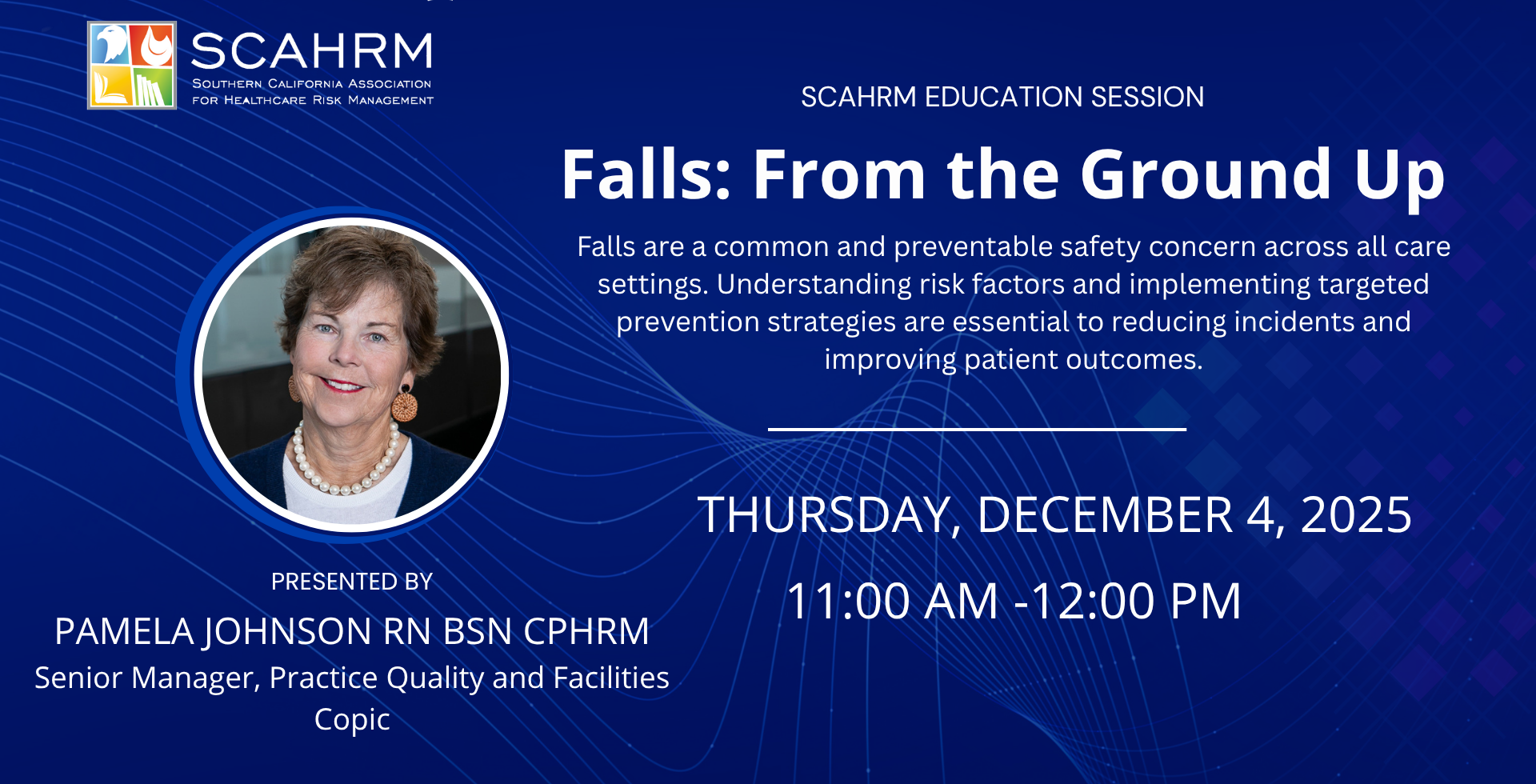
- This event has passed.
SCAHRM December Webinar: Falls: From the Ground Up
December 4 at 11:00 am - 12:00 pm
SCAHRM is excited to announce our December Webinar:
PAMELA JOHNSON RN BSN CPHRM
Learning Objectives
-
- Identify areas for potential falls in healthcare settings
- Bust myths about falls
- Risk mitigation strategies for fall prevention
Session Summary
Falls are not limited to elderly or frail patients—anyone can experience a fall under the right conditions. Misunderstandings about who is at risk often lead to insufficient prevention strategies and overlooked warning signs. In both ambulatory and inpatient settings, common risk factors include mobility limitations, medication side effects, and unfamiliar surroundings. Environmental and procedural issues such as poor lighting, cluttered walkways, and inconsistent rounding practices further elevate the risk. Evidence-based prevention strategies—like regular risk assessments, use of assistive devices, and individualized care plans—are essential. Staff training, patient education, and workflow adjustments play a critical role in reducing fall incidents. A proactive approach that includes comprehensive risk mitigation strategies helps ensure safer care environments across all healthcare settings.
Speaker

PAMELA JOHNSON RN BSN CPHRM
Senior Manager, Practice Quality and Facilities
Copic
Pamela Johnson brings over 18 years of experience in healthcare risk management, with a focus on medical malpractice liability and patient safety across both insurance and large healthcare system settings. A graduate of Johns Hopkins University, Pamela holds certifications in CPHRM (Certified Professional in Healthcare Risk Management), CANDOR (Communication and Optimal Resolution), Team STEPPS and Just Culture, reflecting her commitment to fostering transparency, accountability, and continuous improvement in clinical environments. Throughout her career, Pamela has delivered presentations on a wide range of risk management topics to national audiences, sharing insights on best practices, emerging trends, and strategies for improving outcomes through proactive risk mitigation.
Date: Thursday, December 4, 2025
Time: 11:00 AM – 12:00 PM (PST)
Cost: $20 for Members | $35 for Non-Members
Register Today!

























